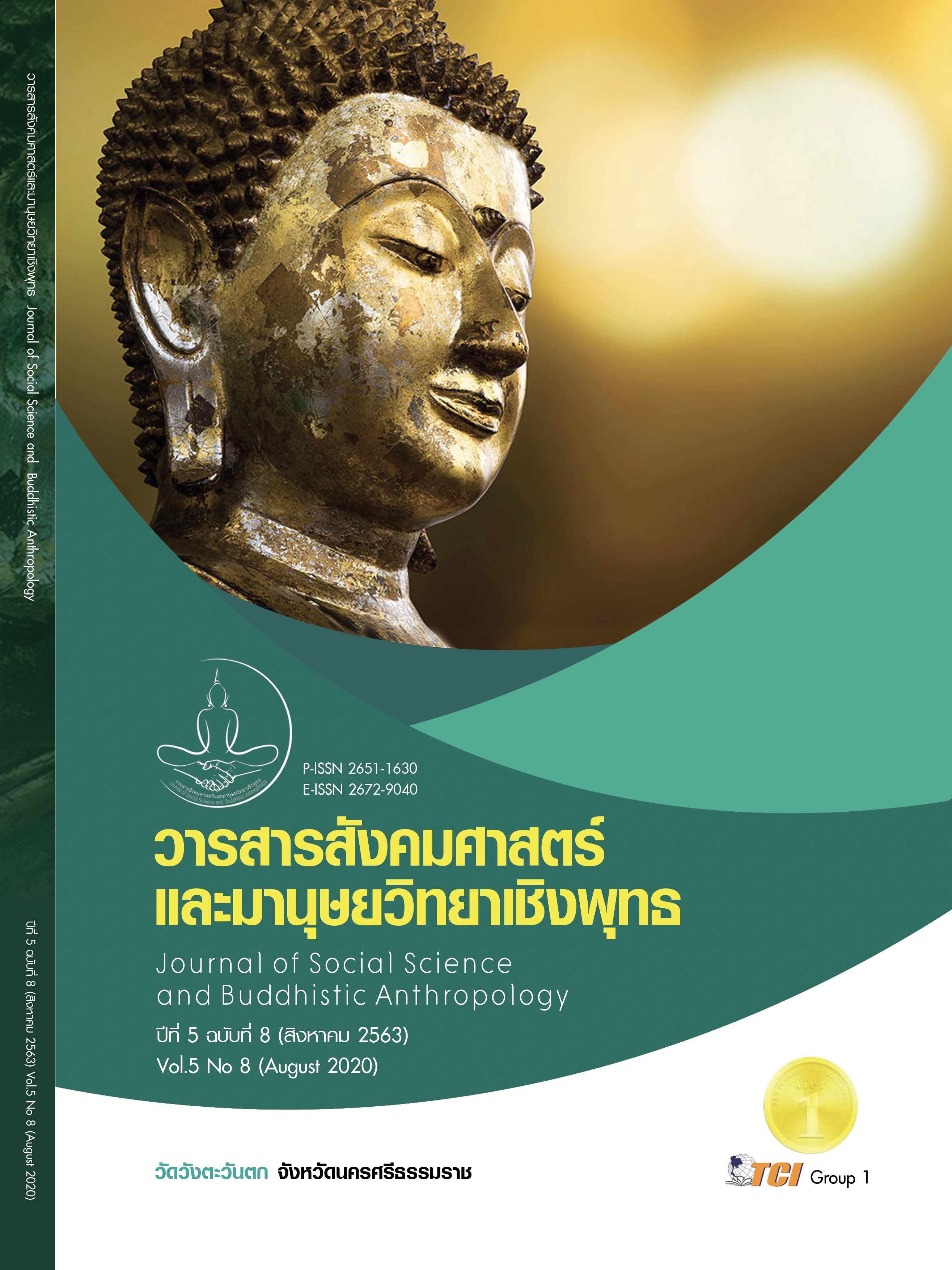PRAK CHUM RUENG PRENG KHMER: REPRESENTATION OF NATURE IN CAMBODIAN FOLKTALES
Keywords:
Prak Chum Rueng Preng Khmer, Representation of Nature, Cambodian FolktalesAbstract
This research study aims to study the representing nature in the Cambodian folk tales translated in Thai version in which it was published in 1997 by Buddhist Institute of Cambodian.By studying document research Through information on Cambodian folk tales, consisting of 8 stories, such as 1) Krung Oudong 2) The God of water and the God of mountain 3) Krung Phnom Penh 4) The white elephant king 5) Crocodile and cart driver 6) Bald Head God 7) Tani banana tree and 8) Slice and betel tree. The result of the Study is as follows: The Cambodian folktale reflects many aspects of the representing natural images. Therefore, the researcher has divided issues of studying physical representing natural images into 3 points, namely 1) The representing natural images as a reality of the sacred world which is a symbol of the universe. 2) The representing nature images as knowledge and food ant the reflecting the topography, water resources, mountains, marshes, rivers and thought systems. The Traditional beliefs and the life of the Khmer people and 3) The representing natural images as a teacher of moral and ethics from the analysis of the representing natural images in Cambodian Folktales. It shows the design of the representing natural images in the Cambodian folktales in which it was considered as wisdom from observation, learning and coexistence with nature of community and farmers. Thus, those stories have been narrated from one people to another from the stories which have significances for the development of folk tales to be a completely perfect story taking the natural context divided into categorical nature.
References
จาบ พิน. (2548). พระราชพิธีทวาทศมาสห หรือพระราชพิธีสิบสองเดือนกรุงกัมพูชา. กรุงพนมเปญ: บริษัท อมรินทร์พริ้นติ้งแอนด์พับลิชชิ่ง จำกัด (ทหาชน).
ชาญชัย คงเพียรธรรม. (2559). สัตว์ศักดิ์สิทธิ์ในสังคมเขมร. วารสารภาษาและวัฒนธรรม, 35 (พิเศษ),118-119.
ธัญญา สังขพันธานนท์. (2560). ใช้เพียงเดรัจฉาน: สัตว์ศึกษาในมุมมองของการวิจารณ์แนวนิเวศ. ปทุมธานี: นาคร.
นิทานพื้นบ้านเขมร. (2001). กรุงอุตดงค์. กรุงพนมเปญ: คณะที่ปรึกษาวัฒนธรรมเขมร.
_____. (2001). เจ้าที่น้ำและเจ้าที่ภูเขา. กรุงพนมเปญ: คณะที่ปรึกษาวัฒนธรรมเขมร.
_____. (2001). ภูเขาพนมโดนเปญ. กรุงพนมเปญ: คณะที่ปรึกษาด้านวัฒนธรรมเขมร.
_____. (2001). แร้งหลอกช้างเผือก. กรุงพนมเปญ: คณะที่ปรึกษาวัฒนธรรมเขมร.
_____. (2002). จระเข้กับคนขับเกวียน. กรุงพนมเปญ: คณะที่ปรึกษาวัฒนธรรมเขมร.
_____. (2002). เจ้าพ่อหัวโลน. กรุงพนมเปญ: คณะที่ปรึกษาวัฒนธรรมเขมร.
_____. (2002). ต้นกลัวยตานีและต้นหนาด. กรุงพนมเปญ: คณะที่ปรึกษาวัฒนธรรมเขมร.
_____. (2002). ต้นหมากและต้นพลู. กรุงพนมเปญ: คณะที่ปรึกษาวัฒนธรรมเขมร.
บรรจง บุรินประโคน. (2561). คนสวน : ภาพแทนตัวตนเชิงนิเวศของเรวัตร์ พันธุ์พิพัฒน์ ในกวีนิพนธ์“นกชีวิต”. วารสารวิทยาการสิ่งแวดล้อมไทย, 1(2), 74-94.
ศรีศักร วัลลิโภดม. (2559). เรื่อง คู่มือฉุกคิด ความหมายของภูมิวัฒนธรรม การศึกษาจากภายในและสำนึกของท้องถิ่น. กรุงเทพ: มูลนิธิเล็ก-ประไพ วิริยะพันธุ์.
สัจภูมิ ละออ. (2553). เสียมเรียบ สยามแพ้ แขมร์พ่าย. กรุงเทพ: สยามบันทึก.
Buell L. (2003). Writing for an Endangered World: Literature, Culture, and Environment in the U.S. and Beyond. London: An Imprint of Harvard University Press.
Fill, A. & Muhlhausler, P. (2001). The Ecolinguistic Reader. Language, Ecology, and Environment. London and New York: Continuum.
Garrard G. (2004). Ecocriticism. London and New York: Routledge Taylor and Francis Group.
Glotfelty Ch. (1996). The Ecocriticism Reader: Landmarks in Literary Ecology. London: University of Georgia Press.
Hall S. (2003). Representation: Cultural Representations and Signifying Practices. London: The Open University.
Kull K. (1998). Semiotic ecology: Different natures in the semiosphere. London: University of Tartu.
Lakoff G. (1987). Women, Fire, and Dangerous Things: What Categories Reveal About the Mind. Chicago and London: University of Chicago Press.
Mayer C. G. & Sylvia. (2006). Literary studies, ecofeminism and environmentalist knowledge production in the humanities. New York: Amsterdam and New York.
Parsons G. (2008). AESTHETICS AND NATURE. UK: University of Cambridge.
Stibbe, A. (2015). Ecolinguistics: Language, Ecology and the Stories We Live By. London: Routledge.








